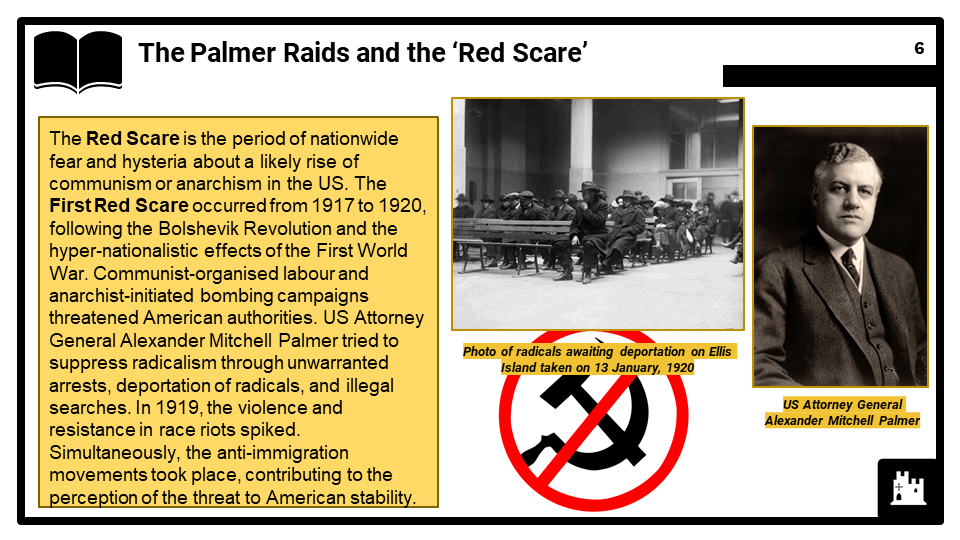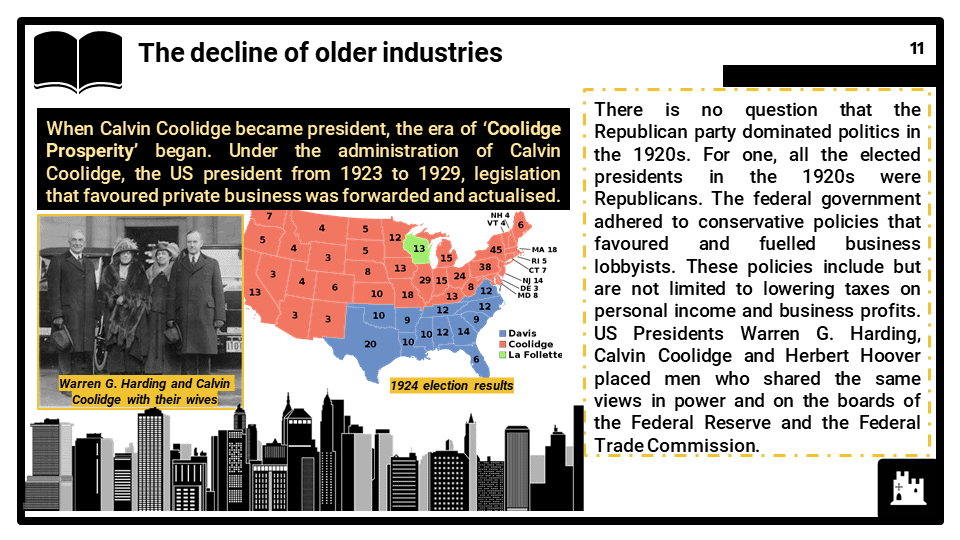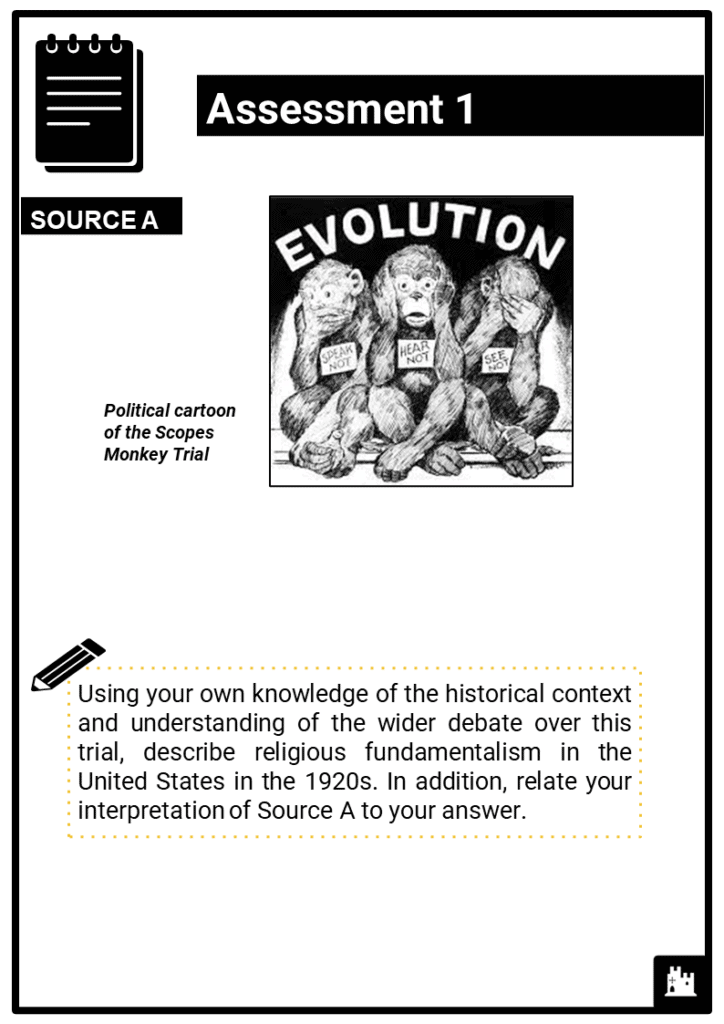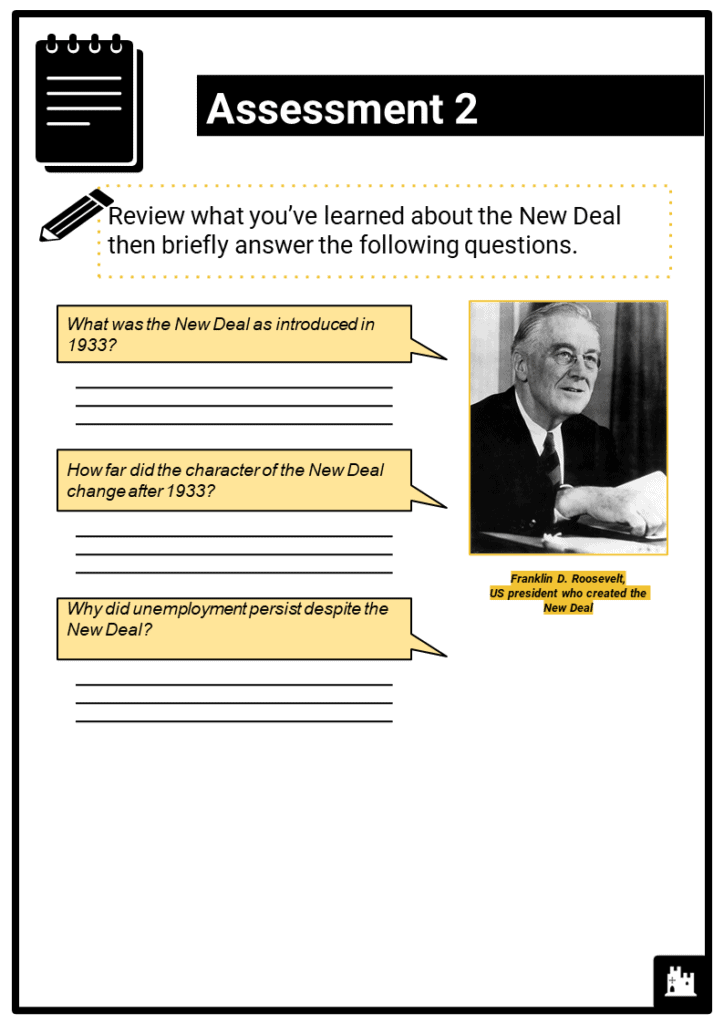Teach any Edexcel IGCSE module A3: The USA, 1918–41, no prep needed!
Do you want to save dozens of hours in time? Get your evenings and weekends back? Be fully prepared to teach any Edexcel iGCSE topic A3?
Every Edexcel iGCSE topic A3 is covered, and each module comes complete with:
A3 The USA, 1918–41
In this module, the development of the US in the wake of WWI is examined. It explores the boom of the 1920s, the economic crash and depression, and the policies and leadership of the time. It also examines societal shifts including hostility to immigrants, racial discrimination, and the changing role of women in society.
This module covers the following themes:
The Roaring Twenties
- The economic benefits of the First World War
- Reasons for economic boom in the 1920s, including Henry Ford and mass production, hire purchase, advertising, consumerism and the popularity of the stock market
- Problems in farming, including over-production and mechanisation
- The decline of older industries
- The leisure industry, including cinema, jazz, dancing, sport, radio, advertising and motoring
- The changing position of women, including the flappers
Increased social tensions in the 1920s
- Attitudes and policies towards immigration
- The Palmer Raids and the ‘Red Scare’
- The Sacco and Vanzetti Case
- Attitudes towards black Americans
- The Ku Klux Klan
- Morals and values and the ‘Monkey Trial’
- Prohibition and the gangsters
The USA in Depression, 1929–33
- The causes and consequences of the Wall Street Crash (1929–30)
- Hoover’s reaction to the Great Depression
- The impact of the Depression on banking, agriculture, industry and on people’s lives: Hoovervilles and the Bonus Marchers, unemployment and homelessness.
Roosevelt and the New Deal, 1933–41
- Roosevelt’s aims
- The Hundred Days
- The Alphabet Agencies, including the TVA and policies to deal with agriculture, industry and unemployment
- The second New Deal, including the Works Progress Administration, welfare for the poor, the old and farmers
- The impact of the Social Security Act
- The National Labor Relations Act (“Wagner Act”) and the Banking Act of 1935
- The achievements and shortcomings of the New Deal
The Opposition to the New Deal
- The opposition of the Supreme Court, Republicans, and business interests
- Radical criticism such as Huey Long’s Share Our Wealth programme and Father Coughlin’s Social Justice campaign






